- Home
- TV History
- Network Studios History
- Cameras
- Archives
- Viewseum
- About / Comments
Skip to content
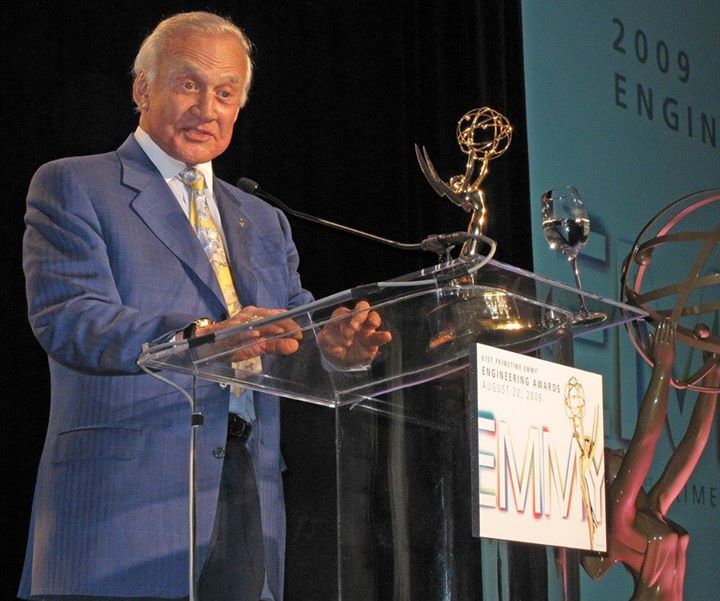

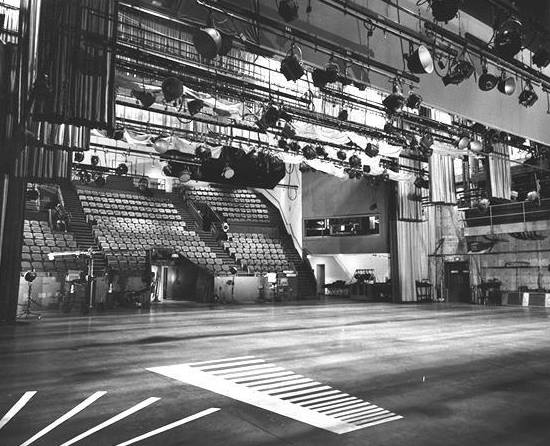

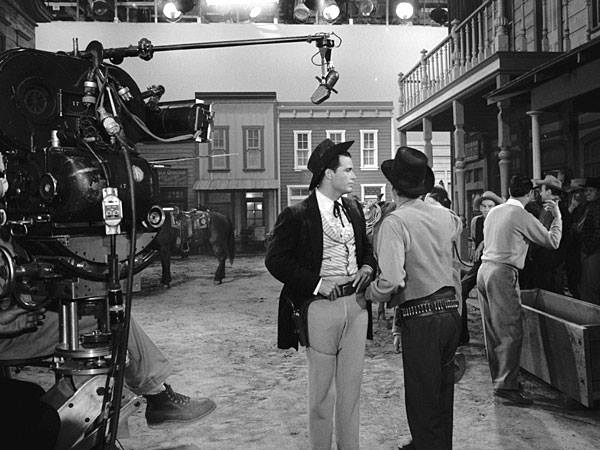

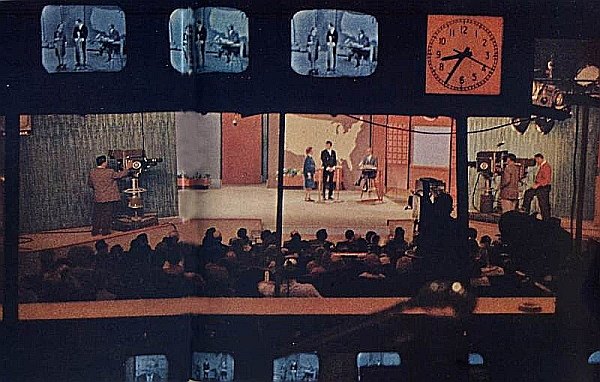



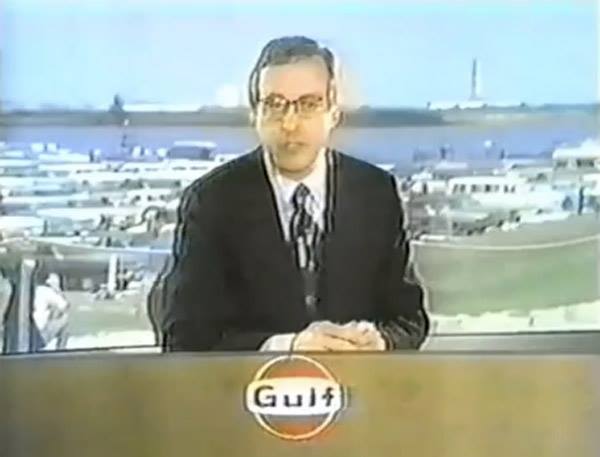

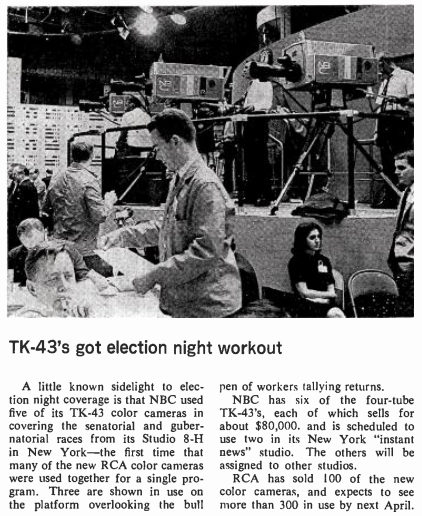

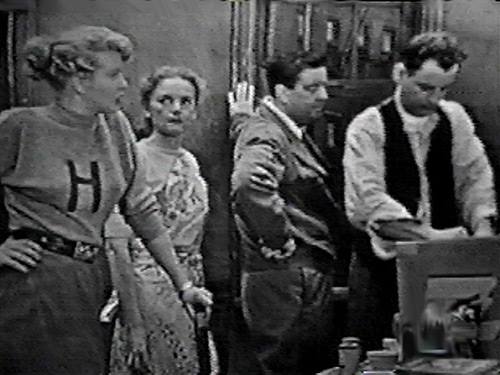

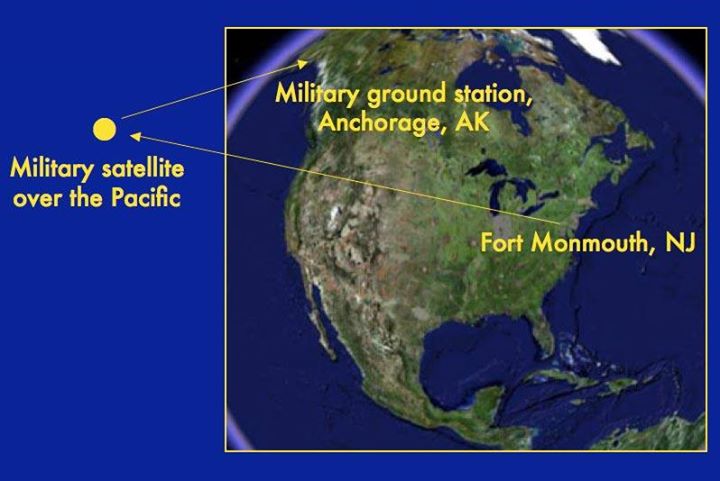



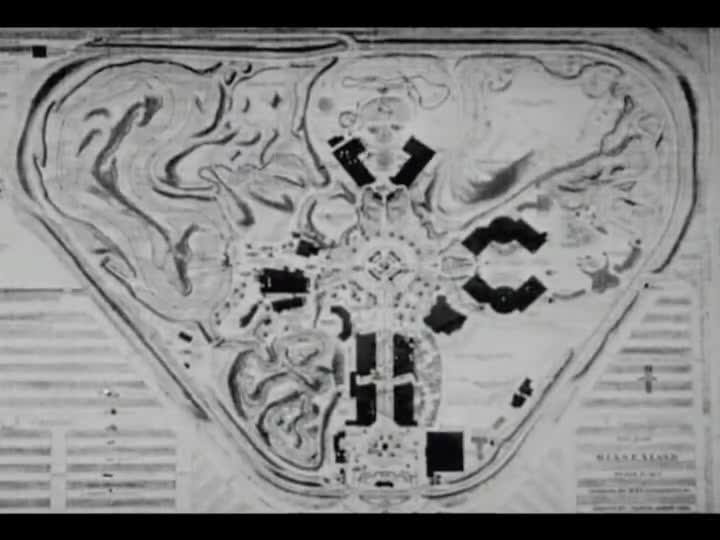

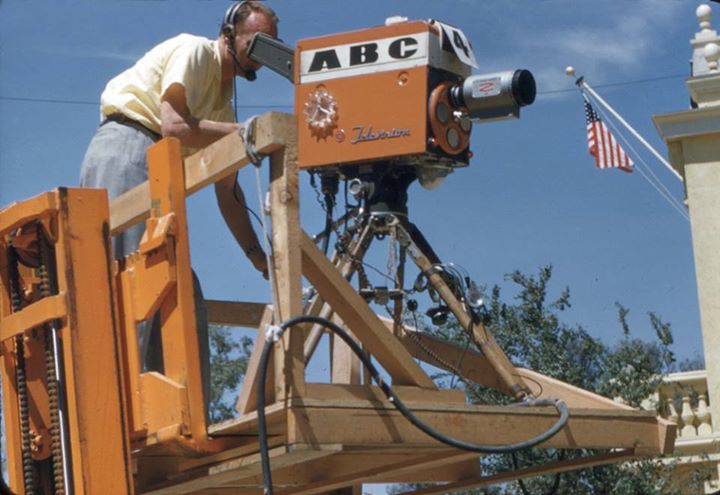

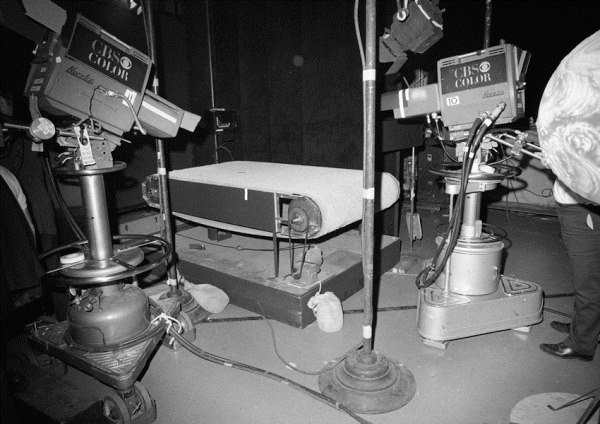

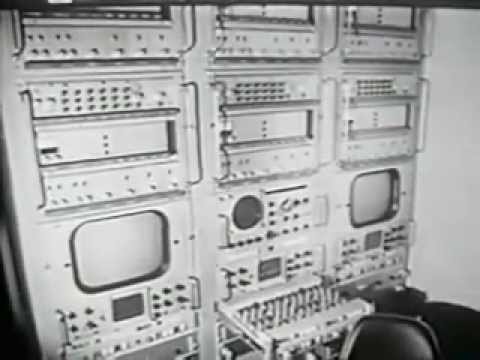

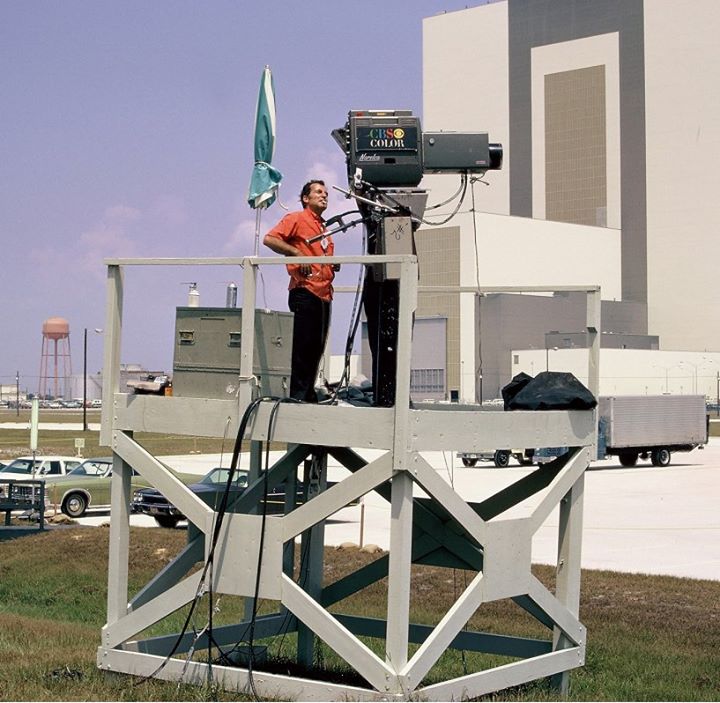



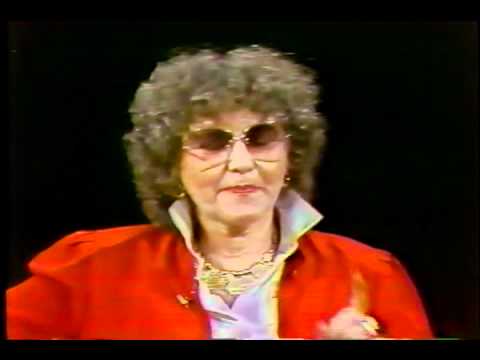



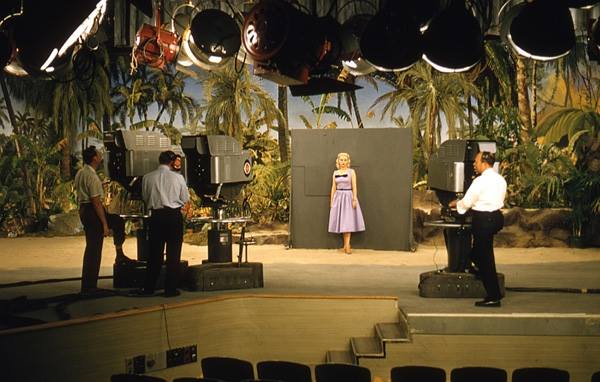

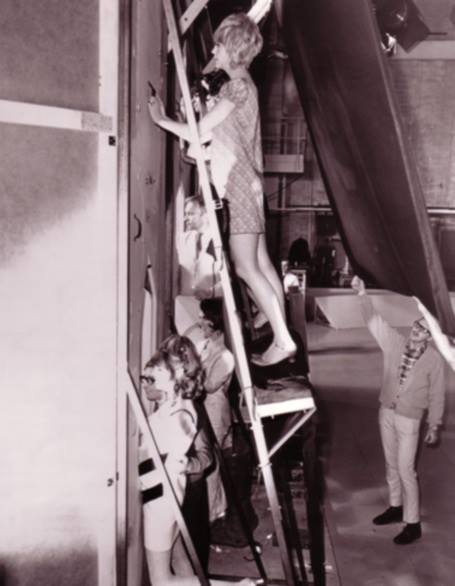

Posts in Category: TV History
Page 70 of 136
« Previous
1
2
3
4
5
6
7
8
9
10
11
12
13
14
15
16
17
18
19
20
21
22
23
24
25
26
27
28
29
30
31
32
33
34
35
36
37
38
39
40
41
42
43
44
45
46
47
48
49
50
51
52
53
54
55
56
57
58
59
60
61
62
63
64
65
66
67
68
69
70
71
72
73
74
75
76
77
78
79
80
81
82
83
84
85
86
87
88
89
90
91
92
93
94
95
96
97
98
99
100
101
102
103
104
105
106
107
108
109
110
111
112
113
114
115
116
117
118
119
120
121
122
123
124
125
126
127
128
129
130
131
132
133
134
135
136
Next » Who Knew? NASA Got An Emmy For It’s Pictures From The Moon!
On July 20, 2014
- TV History
Who Knew? NASA Got An Emmy For It’s Pictures From The Moon!
45 years ago today, Neil Armstrong and Buzz Aldrin became the first men to walk on the moon. They also sent back live television pictures and Mr. Aldrin became the first lunar cameraman.
Five years ago, the TV Academy presented NASA with an engineering Emmy to honor the 40th anniversary of the first live television broadcast from the moon. The event was held August 22, 2009. From ‘Lost In Space’, June Lockhart presented the award and Buzz Aldrin accepting on behalf of NASA.
Thanks to our friend Bob Erbeck for letting us know about this and providing the pictures.
The Pride Of NBC Burbank…Studio 1
On July 20, 2014
- TV History
The Pride Of NBC Burbank…Studio 1
Here’s a look at this gigantic studio from around 1955. Studio 1 is 42′ feet high, 119′ long and 89′ wide with 10,591 square feet of floor space. Studio 3 next door is almost the same size but is one foot shorter coming in at 118′ in length.
Studios 2 and 4 came about three years later and are both 12, 371 square feet. Studio 9 is 11,771 square feet and Studio 11 is 18,079.
Although others may be larger, none is more famous. This was the home of many great shows, but most of all, this was the studio Johnny Carson called home. Enjoy and share!
Remembering James Garner….
On July 20, 2014
- TV History
Remembering James Garner….
Sad to report that Mr. Garner died at his home last night in Los Angeles at the age of 86.
http://variety.com/2014/tv/news/james-garner-of-maverick-rockford-files-dies-at-86-1201265361/
Ultra Rare Photo & Video…In More Than One Way
On July 19, 2014
- TV History
Ultra Rare Photo & Video…In More Than One Way
It’s not often that we (1) find a color shot from television’s black and white days, or (2) get a great look out into CBS Studio 33 from the control room, but what we have here goes even deeper.
At first glance, you may think this is ‘You Bet Your Life’ with Groucho Marx, but it’s not. This is ‘Tell It To Groucho’ which only aired for five months in 1962. At the link is one of only a few surviving clip of the show and this is the pilot episode.
https://youtu.be/sdME_oCXcug
This was his last regular series, and when it ended, he went directly to New York as the guest host of the ‘Tonight’ show in the last weeks of the gap between Jack Paar and Johnny Carson. If fact, Groucho introduced Carson on his first night as host, but only the audio of that intro survives.
‘You Bet Your Life’ was actually one of the first television series to be filmed before a live audience…eight months before ‘I Love Lucy’ began doing the same thing. ‘YBYL’ started October 5, 1950 and was filmed in NBC’s Studio D at the old Radio City West location. Eight cameras were used with four shooting and four being reloaded as the 1000 foot magazines could only shoot ten minutes at a time. They would break for commercials and switch the cameras on the dollies in just a couple of minutes.
‘YBYL’ ended it’s run on NBC in September of 1961, but began syndication immediately. With only five months off, ‘Tell It To Groucho’ debuted on CBS on May 31, 1962. Enjoy and share!


‘Bonanza’…September 12, 1959 – January 16, 1973
On July 19, 2014
- TV History
‘Bonanza’…September 12, 1959 – January 16, 1973
In the photo below we see Pernell Roberts, as Adam Cartwright, filming an episode from the first season, which was almost the last season. Initially the show aired opposite CBS blockbuster ‘Perry Mason’ and the ratings were so bad that NBC wanted to kill the show, but RCA had a different idea.
‘Bonanza’ was one of the first series to be filmed in color and looked great on RCA’s big color sets so they took over as the primary sponsor and sold a lot of sets, thanks in part to the scenic Lake Tahoe location footage.
For the first two years, the show aired at 9 on Saturday nights and didn’t break into the top 30 till the second year. In October of ’61, the third season debuted, but it was now on Sunday night at 9 and all across America, you could hear the channels flipping from CBS to NBC at the end of the ‘Ed Sullivan Show’ which ended at 9.
That year ‘Bonanza’ was the number two show and stayed in the top three till 1970 and was number one from ’64 till ’67. By 1970, Bonanza was the first series to appear in the Top Five list for nine consecutive seasons (a record that would stand for many years) and thus established itself as the single biggest hit television series of the 1960s. Bonanza remained high on the Nielsen ratings until 1971, when it finally fell out of the Top Ten.
Had CBS not put ‘The Judy Garland Show’ up against ‘Bonanza’ at it’s peak in the ’63 – ’64 season, who knows how long that great show would have lasted. Learning from the Garland experience, CBS put a show against ‘Bonanza’ in 1967 that no one expected to last more than one season, but ‘The Smothers Brothers Comedy Hour’ was the show that could finally hold it’s own against the Cartwrights.
In the fall of ’70, the show dropped to number nine. In the fall of ’71, to number twenty and in the last season, the show didn’t even make the top thirty.
By the way, Michael Landon was the only resident of The Ponderosa that didn’t wear a hairpiece. Even Hop Sing, played by Sen Yung. wore a wig with a queue. Enjoy and share!
45 Years Ago Today…Apollo 11 Heads For The Moon: Day 4
On July 19, 2014
- TV History
45 Years Ago Today…Apollo 11 Heads For The Moon: Day 4
Here is the fourth of eight daily articles written for Eyes Of A Generation by Jodie Peeler on this historic event. Enjoy and share!
______________________________________________________
As noted a few days ago, “Broadcasting” Magazine estimated the cost of the networks’ Apollo 11 coverage at $11 million ($71.3 million in 2014 dollars), with $6.5 million ($42.1 million in 2014 dollars) of that in direct production costs, including the multi-network pool. With everything the broadcasts would require – facilities, remotes, and logistical considerations only scratching the surface – and with the length of the coverage pre-empting regular programming, sponsorship took on even more importance than usual. Advertising Age reported that 11 sponsors spent $4 million ($25.9 million in 2014 dollars) on network coverage for Apollo 11.
Of the networks, NBC had perhaps the longest and most famous recurring sponsorship for continuing coverage. In December 1960, Gulf Oil chief Charles Whiteford struck an agreement with NBC’s Robert Kintner for sponsorship of “instant specials,” produced by Chet Hagan and anchored by Frank McGee, which would air in prime time and provide context for events that had happened only a few hours before. When the space program came along, Kintner wanted all-out coverage, and Hagan’s “instant special” unit became the go-to team. Gulf agreed to extend its sponsorship to space coverage.
Thanks to this partnership, NBC viewers remember continuing coverage of news events featuring Gulf commercials, and often a Gulf logo on the anchors’ desks. Anchors would often throw to commercials with a line such as “We’ll be back in a moment after this word from Gulf.” While other sponsors also bought time, Gulf’s association with NBC’s special events coverage through 1973 makes it perhaps the most-remembered sponsorship.
ABC often ran its coverage on a sustaining basis, though sponsors later came on as the 1960s progressed and the network’s news operations grew.
On Apollo 11, ABC’s most prominent sponsor was Tang, the instant orange drink closely associated with the space program, and Tang logos were prominently displayed on the anchor desks.
On the other hand, CBS News policy forbade placement of sponsor logos on desks, and forbade anchors from mentioning sponsors during throws to commercial (a typical throw was something like “CBS News color coverage of the flight of Apollo 11 will continue in a moment”). The only mentions by network personnel came at the start, resumption from local station time, and conclusion of coverage, when CBS announcer Harry Kramer read the “brought to you by…” billboards.
Since Apollo 7 CBS space coverage had been sponsored by Western Electric, the manufacturing and supply unit of the Bell System, which ran soft institutional ads at intervals throughout the coverage. This association continued through the lengthy coverage of Apollos 8, 9 and 10, and CBS naturally assumed Western Electric would do the same on Apollo 11. Two weeks prior to the mission, however, Western Electric informed CBS it would only sponsor one-third of the coverage. CBS thus had to scramble to find replacement sponsors. The International Paper Company (“where good ideas grow on trees”) came to the rescue, buying a third of the coverage as its first-ever network television buy. The remaining third was split between Kellogg’s and General Foods (which promoted its new Maxim freeze-dried coffee).
Even though the networks found sponsors for their Apollo 11 coverage, the effort still ran at a loss. CBS estimated that although it completely sold its ad time for Apollo 11, it still fell short of covering costs by $2.5 million ($16.2 million in 2014 dollars).
(Among other sources, this essay is indebted to the tremendous research into network space coverage conducted by Alfred R. Hogan for his 2005 master’s thesis, “Televising the Space Age.” Hogan’s detailed analysis of CBS spaceflight coverage includes details on sponsorship deals for space coverage, along with a listing of major sponsors for each flight CBS covered.)
Although commercials from Apollo 11 are difficult to find, it’s possible to look at commercials from other missions and give you a taste of what kinds of ads you’d have seen if you’d been watching in July 1969.
Here’s a soft-sell Gulf Oil spot seen on NBC during the Apollo 12 mission – “Bringin’ Home the Oil,” featuring the Clancy Brothers and Tommy Makem. The song, based on “The Gallant Forty Twa,” salutes Gulf’s then-new oil terminal in Ireland’s Bantry Bay.
http://www.youtube.com/watch?v=yAFMgt4FeK0
On ABC, you might have seen ads like these, which played up Tang’s fabled association with the space program:
http://www.youtube.com/watch?v=rVZz2FdtzOQ
http://www.youtube.com/watch?v=6t6zoY9zaVQ
A CBS sponsor billboard from the top of the Apollo 11 launch coverage, with Harry Kramer on the announce:
http://youtu.be/fu44hY_OnHo?t=2m55s
From CBS coverage, a Western Electric ad from the Apollo 13 splashdown telecast on April 17, 1970, typical of the institutional spots you’d see from these firms.
http://youtu.be/RU-N3oeETH4?t=7m49s
From the same coverage, Lloyd Bridges narrates an ad for International Paper.
http://youtu.be/vqNIA_mMS0M?t=2m33s
Stop The Presses! NBC/RCA TK43 History Rewrite!
On July 18, 2014
- TV History
Stop The Presses! NBC/RCA TK43 History Rewrite!
Thanks to Martin Perry, here’s more on the mysterious appearance and disappearance of the RCA TK43s at NBC New York. The article is from “Broadcasting Magazine” dated November 21, 1966. This would be coverage of the Senate and House elections midway through LBJ’s first elected term.
I have heard several variations on the TK43s arrival and use that night and until now, had thought there were only two delivered but it seems there were six. I had heard that, over the objections of NBC Chief Video Engineer Fred Himelfarb, the cameras were delivered by RCA a couple of days before and he was instructed by management to use them in a conspicuous location where they could be seen in wide shots, complete with NBC logos.
I’ve also heard that the TK43 images were not actually used on the air. The set up process and time needed to tweak the pictures was notoriously long and I’ve heard that time ran out and the cameramen were just going through the motions with about six TK41s handling the coverage from the floor and the 9th floor balcony in 8H.
This was the first and only time TK43s were used at any US television network, and if what I’ve heard is true, their pictures never made it to air. I think RCA picked up five of the cameras and left one behind which NBC used in Studio 5H which was the always hot, breaking news studio and also an overnight update studio for WNBC.
Remembering Elaine Stritch…
On July 18, 2014
- TV History
Remembering Elaine Stritch…
Did you know she was the original Trixie Norton on ‘The Honeymooners’? Below is the only photo of her in that roll on November 12, 1951. That episode was the fourth ever Honeymooners sketch and was done on ‘The Dumont Cavalcade Of Stars’, which was hosted by Jackie Gleason.
This sketch with Elaine Stritch is called “The New Television” and this the first time both Trixie and Ed Norton make their appearances with Art Carney debuting as Norton. In the first ever sketch, five weeks earlier, Carney had played a policeman. Trixie, as played by Stritch, was portrayed as a burlesque dancer but Gleason thought that Trixie needed to be a more demure housewife and on December 7, 1951, Joyce Randolph took over the role.
Pictured here is Elaine Stritch, Pert Kelton (the original Alice), Jackie Gleason and Art Carney in his debut role as Ed Norton. Enjoy and share!
45 Years Ago Today…Apollo 11 Heads For The Moon: Day 3
On July 18, 2014
- TV History
45 Years Ago Today…Apollo 11 Heads For The Moon: Day 3
Here is the third of eight daily articles written for Eyes Of A Generation by Jodie Peeler on this historic event. Enjoy and share!
_____________________________________________________
For most of the United States, live coverage of Apollo 11’s journey was easily accomplished through the same network relays that brought regular programming. Viewers in Alaska, however, got to watch Apollo 11 through an unusual military-civilian partnership.
In 1969, the network programming that came to Alaska was via film and videotape that was flown up and bicycled among stations. Alaska did not yet have a civilian ground station; although what became the Bartlett Earth Station was under construction near Talkeetna, it wouldn’t be ready until 1970.
Knowing the historical significance of Apollo 11, Alaska’s broadcasters and its Congressional delegation, Senators Ted Stevens and Mike Gravel and Rep. Howard Pollock, sought help for bringing live coverage of Apollo 11 to Alaska. Out of all this came a plan to use Army satellite assets to beam pictures from Fort Monmouth, New Jersey to a military ground station flown to Anchorage. A military satellite over the Pacific would relay the coverage from Fort Monmouth to the Anchorage ground station.
This wasn’t as easy as it sounded, though. For one, the satellite would have to transmit at an awkward angle to reach Alaska. The television signal would need to be converted for transmission via the military satellite link, and then converted back for civilian use. Audio for the broadcasts would be transmitted separately and had to be synchronized with the video.
On top of that came the challenge of choosing which coverage would be transmitted. By lottery, CBS was chosen, and the broadcasts sent to Alaska would come from the live feed of WCBS-TV in New York. However, the Army refused to transmit the commercials, and technicians at Fort Monmouth cut them out of the feed to Alaska.
In spite of all the technical issues, and even though the final plans weren’t in place until 72 hours before the mission began, the unusual arrangement came through and the people of the 49th State got to watch history as it happened. The CBS feed was shared by all three Anchorage television stations, coordinated through CBS affiliate KTVA-TV.
Since the coverage was viewable only in Anchorage, many Alaskans made arrangements to spend the historic days there so they could witness history being made, and travel companies pitched in to help. For instance, Alaska Airlines offered $39.90 flights from Fairbanks to Anchorage for the week of Apollo 11.
As pioneer Alaska broadcaster (and KTVA-TV founder) Augie Hiebert, who played a crucial role in making it all happen, stated in a press release: “I had no idea that we were going to get this kind of quality on a circuit like this that was put together at the last minute and not designed for civilian television in the first place. I think the military did a fantastic job.”
By the way, the CBS color signal was transmitted, in color, on an old Dumont black and white transmitter that had been modified by the KTVA engineers the year before.
Tomorrow: A word about the sponsors that made the networks’ $11 million spectacular possible (but whose messages didn’t reach Alaska).
July 15, 1968…’One Life To Live’ Debuts On ABC
On July 17, 2014
- TV History
July 15, 1968…’One Life To Live’ Debuts On ABC
In its 43 year history, ‘One LIfe To Live’ covered a lot of ground in it’s plot lines, but none were more extraordinary than the “heaven” scenes done in 1987, 2008 and 2012.
Above is our friend Howie Zeidman (left) and Rich Westlein on camera in ABC TV 1 shooting the first visit to “heaven” in 1989 with Ikegami HK 312s and their side mounted teleprompters. The other photo shows how “heaven” would have looked on the screen.
I think the show spent most of it’s life in ABC TV 17 but in 2009 it moved to TV 23 which was about 30% larger. After months of cancellation rumors, ABC announced on April 14, 2011 that ‘All My Children’ and ‘One Life To Live’ would end their runs.
While the cancellations of both soap operas were announced on the same day, ‘One Life To Live’ was to remain on the air 4 months longer because its replacement would not be ready in time. In response to the cancellations, Hoover Vacuums withdrew its advertising from all ABC programs out of protest.
The final episode aired on January 13, 2012, with an open-ended story because the serial was supposed to continue on a cable/internet network at the time the last scenes were taped.
The departure of ‘One Life to Live’ ended a 62-year history of daytime television soap operas broadcast from New York which started in 1950 with the CBS’s daytime drama ‘The First Hundred Years’. Enjoy and share!
July 17, 1955…Disneyland Opens: Behind The Scenes ABC Video
On July 17, 2014
- TV History
July 17, 1955…Disneyland Opens: Behind The Scenes Video
61 years ago today, what was then television’s largest remote took place at the Disneyland Grand Opening. Here is the ultra rare, 14 minute, behind the scenes film produced by ABC to commemorate the massive 29 camera, live broadcast.
This video ends with the narrator saying “And here’s the show”. At this link is the full 90 minutes program, hosted by Art Linkletter, Walt Disney and many more famous faces.
https://www.youtube.com/watch?v=JuzrZET-3Ew
Since this embedded video is not available on the internet anywhere but here, please share this so your friends can see it. Enjoy! -Bobby Ellerbee
July 17, 1955…Disneyland Opens, Part 1
On July 17, 2014
- TV History
July 17, 1955…Disneyland Opens, Part 1
In Part 2, I’ll post an ultra rare ABC film shot that day on how the largest remote in television’s short history was done, but first, here are a couple of rare color shots from the Disneyland opening sent to us by our friend Mike Clark.
Who knew these KABC TK30s were painted orange and had cool, custom gold tone focus demands? The camera on the lift has a Zoomar studio lens and the other camera is using a rare Walker Electro Zoom lens which came before the RCA Electro Zoom model. This lens was designed by cinematographer Joseph Walker in the late 1930s but did not come into being till he retired around 1950, when the ever active Walker built and sold a few dozen for movie and television use before selling the manufacturing rights to RCA around 1952. Enjoy and share!
45 Years Ago Today…Apollo 11 Heads For The Moon: Day 2
On July 17, 2014
- TV History
45 Years Ago Today…Apollo 11 Heads For The Moon: Day 2
Here is the second of eight daily articles written for Eyes Of A Generation by Jodie Peeler on this historic event. Enjoy and share!
_____________________________________________________
On July 17, 1969 Apollo 11 was coasting toward its historic rendezvous with the Moon. With all the efforts of launch coverage behind them, the three networks coordinated their coverage from New York. Field correspondents at Mission Control in Houston and at several other points around the country provided updates whenever events warranted – and since not much took place during the trans-lunar coast, there wasn’t that much to report. Meanwhile, the networks prepared for longform coverage of the lunar landing and first steps on the Moon, to come on July 20.
While all three networks went to great lengths to provide special coverage, NBC and CBS dueled in terms of elaborate sets. NBC transformed 30 Rock’s famous Studio 8H into the NBC News Space Center, with Chet Huntley anchoring from a ninth-floor platform. Frank McGee and Peter Hackes, both mainstays of NBC’s spaceflight coverage since it began, handled the more detailed aspects of the flight.
A few blocks away, CBS pulled out the stops and transformed the Broadcast Center’s Studio 41 into an elaborate set for the coverage. As described in the CBS commemorative volume “10:56:20 P.M. EDT 7/20/1969,” designer Hugh Gray Raisky developed an anchor desk that stood 24 feet above the studio floor, set against an artist’s conception of the Milky Way. Two six-foot globes, one of the Earth and one of the Moon, stood to either side of the desk. Nearby, correspondent David Schoumacher provided updates from a status desk. Elsewhere in the studio were models and dioramas to simulate what was going on.
One of the most famous was a conveyor belt with a simulated lunar surface as seen in the photos below. In conjunction with a model of the Apollo spacecraft, the “lunar surface” was keyed against a space backdrop to provide a picture of the spacecraft flying in lunar orbit. In all, CBS deployed 16 cameras throughout Studio 41 during the Apollo 11 coverage, doing everything from covering the anchor desks to providing information for the anchors over a closed-circuit setup.
While NBC brought spacecraft mock-ups into 8H for technical explanations of the Apollo spacecraft, CBS used live remotes from where the spacecraft were built. Correspondent Bill Stout reported from North American Rockwell in Downey, California, where he sat inside a life-size model of the Command Module with North American test pilot Leo Krupp showed viewers what was going on. At the Grumman factory in Bethpage, Long Island, where the lunar modules were built, correspondent Nelson Benton did likewise with Grumman test pilot Scott MacLeod.
In the next installment, we’ll take a look at the unorthodox methods that got live coverage of Apollo 11 to the people of Alaska.


The First CBS Color Trucks…Circa 1966
On July 16, 2014
- TV History, Viewseum
The First CBS Color Trucks…Circa 1966
I’m not sure if our friend Dave Minott was involved in building this first CBS Labs Color truck, but he was there for all the rest. The cameras (with no cables attached) are newly delivered Norelco PC60s. This is quite interesting and I hope those of you that worked on these trucks will chime in with your stories. Enjoy and share!
45 Years Ago Today…Apollo 11 Leaves For The Moon: Day 1
On July 16, 2014
- TV History
45 Years Ago Today…Apollo 11 Leaves For The Moon: Day 1
With these daily articles written for us by Jodie Peeler, we’ll follow the story of two missions…the one “in the air” and the one “on the air”. She has done a beautiful job of capturing the details and emotion of that time with words and relevant video clips, but it will be made all that much better with your recollections, photos and comments on watching and working on the NASA space missions. Enjoy and share! Bobby Ellerbee
______________________________________________________
On this day in 1969, Apollo 11 began its historic journey to the Moon. The first landing by humans on another world drew heavy worldwide media attention throughout the long-anticipated mission. Four previous manned Apollo flights had demonstrated the spacecraft and procedures would work, and now Apollo 11 was set to fulfill the goal established by President Kennedy in May 1961. In the coming days, we’ll take a closer look at some aspects of how the networks covered this momentous voyage.
The launch was covered by all three major networks in the United States. ABC’s longtime science editor Jules Bergman handled duties from the Kennedy Space Center, with Frank Reynolds anchoring from New York. NBC built an elaborate Space Center set in New York’s Studio 8H, where Chet Huntley and Frank McGee did anchoring duties. David Brinkley (who, oddly enough, wasn’t very interested in the space program) was sent to KSC to cover the launch.
CBS anchorman Walter Cronkite covered the launch from KSC for his network, as he had since 1961; serving as his “color man” was Apollo 7 commander Wally Schirra, one of the original seven astronauts. Also at the Cape to cover various aspects of the story were, among others, Heywood Broun and Eric Sevareid, who was covering his first manned spaceflight. Arthur C. Clarke was also on hand to provide commentary, as he had during the CBS coverage of Apollo 10.
While previous CBS launch broadcasts had been configured as remotes, executive producer Robert Wussler decided the importance of Apollo 11 meant the launch broadcast should be controlled from Florida, and a control room was constructed below the CBS studio at the Kennedy Space Center. According to the official CBS history of its Apollo 11 coverage, the only problem with the launch day broadcast came when NASA’s launch pad microphones failed a few minutes before launch. NASA offered to provide the networks with an audio recording of the Apollo 10 liftoff synchronized to Apollo 11’s liftoff, but CBS News President Richard Salant refused the offer. CBS viewers thus heard the natural sound of the launch as picked up by its microphones in front of the studio.
Apollo 11 received its “go” for trans-lunar injection, the rocket burn that would send the spacecraft out of Earth orbit and toward the Moon, shortly after midday. Soon after, once it was clear Apollo 11 was safely on its way to the Moon, the networks signed off their coverage from Florida. Reporters and producers headed back to New York or to assist with coverage from Mission Control in Houston, while “clean-up” crews remained behind to close up shop at the Cape.
“Broadcasting” Magazine estimated that, in all, Apollo 11 coverage cost the three networks more than $11 million, with $6.5 million of that for direct production costs.
In the next installment, we’ll take a look at the networks’ arrangements for developments throughout the mission, including the studios constructed for continuing coverage of the flight.
– Jodie Peeler
The start of ABC’s launch day coverage, with Frank Reynolds:
http://www.youtube.com/watch?v=FQhC2EzxKCA
Jules Bergman narrates ABC coverage’s of the Apollo 11 launch:
http://www.youtube.com/watch?v=7LTGUsEv_Mo
The beautiful and haunting intro to the CBS launch broadcast:
http://youtu.be/fu44hY_OnHo?t=1m40s
CBS coverage of the Apollo 11 launch:
http://www.youtube.com/watch?v=TmHABUfjYPI
NBC coverage of the Apollo 11 launch:
http://www.youtube.com/watch?v=oiiwAfGjLxU
Lightning Strikes Twice! A Personal Note…Meet Teddy!
On July 15, 2014
- TV History
Lightning Strikes Twice! A Personal Note…
Meet Teddy! Here he is on the left with me and JJ on Saturday…the day he came home to live with us.
As many of you know, I lost my great little buddy Jack about three weeks ago. I’d raised him from a puppy and we had twelve great years together. Teddy is not Jack’s replacement, because there can never be one, but amazingly, his personality and appearance are very similar and help fill a big hole that JJ and I have been in since last month.
Teddy is about eight or nine and I can’t tell who’s more happy to have him here…me or JJ. They have been playing almost nonstop. Life short…enjoy it! Thank you for all the kind notes over the past few weeks! Bobby, JJ and Teddy Ellerbee


Surprise Follow Up…CBS Studio 72/Reeves Teletape
On July 15, 2014
- TV History
Surprise Follow Up…CBS Studio 72/Reeves Teletape
In response to yesterday’s post about CBS Color Studio 72, which later became Reeves Teletape, WNBC’s Geoffrey DeVoe sent this interesting video. Here’s Tony Randall on WNBC’s ‘Live At Five’ with Jack Cafferty talking about the television production space shortage in New York in the early 80s.
Randall’s show, ‘Love Sidney’ which aired on NBC from ’81 till ’83 had been pushed all over NY in it’s first season of taping and had just moved to Reeves Teletape, but had to go to LA for seven weeks because another project was already on their books…’Sesame Street’. I think that prior to the move to Reeves, ‘Sesame’ had been done at WNET in New York, but I’m not sure. Anyone know?
Cafferty mentions the first couple of shows were done “across the hall in studio 6A”. Actually, the first show was taped in NBC studio 8H, and then moved for the second taping to the Teletape studio. They could only do the first show in 8H because of that studio’s commitment to ‘Saturday Night Live’.
When it returned to New York, ‘Love, Sidney’ taped in both NBC studio 8H as well as at the CBS Broadcast Center. I don’t know if they ever went back to Reeves or not, but given the long run of Reeves involvement with ‘Sesame’, I suspect those seven weeks there turned into many years. Enjoy and share!
https://www.youtube.com/watch?v=EUloz_LFz-4
This is from WNBC’s Live At Five newscast. Tony Randall and Nancy Littlefield of the NYC Film/TV Commission join anchor Jack Cafferty. At issue was the fact …
You’ve Come A Long Way Baby…
On July 15, 2014
- TV History
You’ve Come A Long Way Baby…
With the 1960 election piece just posted, this photo of a stagehand changing the tote board numbers by hand popped into my head. These photos are from ABC’s 1952 election coverage which was pretty much a landslide for Dwight Eisenhower over Adlai Stevenson.
This year computers would play a part in the elections as voter forecast tools at CBS and NBC, but not in the production of the live coverage. That was all still low tech, manual labor literally done behind the scenes. More in the next post. Enjoy and share.
The CBS Color Girl…
On July 14, 2014
- TV History
The CBS Color Girl…
NBC had auburn haired Marie McNamara in New York as television’s first and original “color girl”, but Television City had the pretty, blond Ann Palmer.
Adjusting the primary colors was one thing, but getting the fleshtones right was critical. Both Ann and Marie spent hundreds of hours posing for the cameras, but were never seen on television.
This is Television City Studio 33 and this may be ‘The Gary Moore Show’ on a summer visit from New York around 1960. Enjoy and share!
Behind The ‘Laugh In’ Joke Wall, Photo & Video
On July 14, 2014
- TV History
Ultra Rare…Behind The ‘Laugh In’ Joke Wall, Photo & Video
https://www.youtube.com/watch?v=cFksUB9gWyk
First, there is an “extra special” blooper at the 1:30 mark of this great ‘Laugh In’ joke wall blooper reel. By the way, the first person you see is Producer George Schlatter, with the bead.
This is the only known photo of this famous ending portion of the show that gives us a look at how it was staged. I think ‘Laugh In’ came from NBC Burbank Studio 3, but over the years, could have been done in more than one location there.
Although this was a color show, notice the blooper reel is in black and white and here’s why. This was one of the first weekly shows to be shot and edited on color videotape, but it was still a hand splicing task back then. The best way to edit the show was to also make a kinescope of the live taping and first, edit the kine film. The cuts were very fast and it took the editors about five or six weeks to get each episode ready for air. Enjoy and share!
Page 70 of 136
« Previous
1
2
3
4
5
6
7
8
9
10
11
12
13
14
15
16
17
18
19
20
21
22
23
24
25
26
27
28
29
30
31
32
33
34
35
36
37
38
39
40
41
42
43
44
45
46
47
48
49
50
51
52
53
54
55
56
57
58
59
60
61
62
63
64
65
66
67
68
69
70
71
72
73
74
75
76
77
78
79
80
81
82
83
84
85
86
87
88
89
90
91
92
93
94
95
96
97
98
99
100
101
102
103
104
105
106
107
108
109
110
111
112
113
114
115
116
117
118
119
120
121
122
123
124
125
126
127
128
129
130
131
132
133
134
135
136
Next »